Chinese medicine and acupuncture approach to managing rheumatoid arthritis is quite effective. In fact, I have seen it in my practice with many patients. It’s not about curing R.A. but more about managing and preventing attacks of intense pain.
In today’s video, I share the Western definition and their treatment options for rheumatoid arthritis. Then I dive into the TCM view including different patterns of diagnosis, symptoms, acupuncture points, ear acupuncture, herbal formulas, and food recommendations.
Be sure to watch till the end as I list the 3 best ways for patients to manage RA naturally at home! After all we are educators as well as practitioners!
Keep rocking using TCM,
Clara
TCM Geek
PS: If you want more, check out my page with all my acupuncture treatment protocols from pain to high blood pressure! And if you haven’t invested in my AcuPoints Made Easy Book (PDF or Hard Copy) yet, or my Chinese Medicine TREATMENTS Made Easy, get your copy here! 🙏
Acupuncture Treatments for Rheumatoid Arthritis
Rheumatoid Arthritis Definition & Main Symptoms
Rheumatoid arthritis is a chronic autoimmune condition that causes inflammation in the joints. It is more common in women and typically develops between the ages of 40 and 60.
The main symptoms of rheumatoid arthritis include joint pain, swelling, and stiffness. These symptoms may come and go in flare-ups, and can range from mild to severe. Rheumatoid arthritis can also cause fatigue, and in severe cases, deformities.
Western Treatments for Rheumatoid Arthritis: RA requires ongoing management. There is no cure for it, but there are various treatment options available to help manage the symptoms. These include medications, physical therapy and surgery for some extreme cases.
Factors that can worsen arthritis symptoms:
- Age: The risk of developing most types of arthritis increases with age.
- Gender: rheumatoid arthritis is more common in women.
- Obesity: Carrying excess weight puts extra stress on joints, which can worsen the symptoms of arthritis.
- Occupation: Jobs that involve repetitive motions or heavy lifting can increase the risk of developing arthritis.
- Smoking: Smoking has been linked to an increased risk of developing rheumatoid arthritis.
- Poor diet: A diet high in processed and sugary foods can contribute to inflammation in the body, which can worsen the symptoms of arthritis.
Chinese Medicine view on Rheumatoid Arthritis
Definition: autoimmune inflammation of joints, leading to progressive destruction of articular structures.
TCM Causes: genes, weak muscles, bad eating habits making the body too acidic (alcohol🍺, sodas🥤, caffeine☕️) & smoking.
Bi Syndrome is a TCM disorder causing pain, numbness and or heaviness, and is caused by pathogen invasion & Qi stagnation in the joints of the 4 limbs. Rheumatoid Arthritis is classified as Bi Syndrome.
The 3 Best Acupuncture Points for Rheumatoid Arthritis
- Gb 34 is the BEST acupuncture point for joints, ligaments and tendons disorders.
- LI 4 is the BEST acupuncture for pain.
- ST 36 nourishes Qi & Blood, and promote healing.
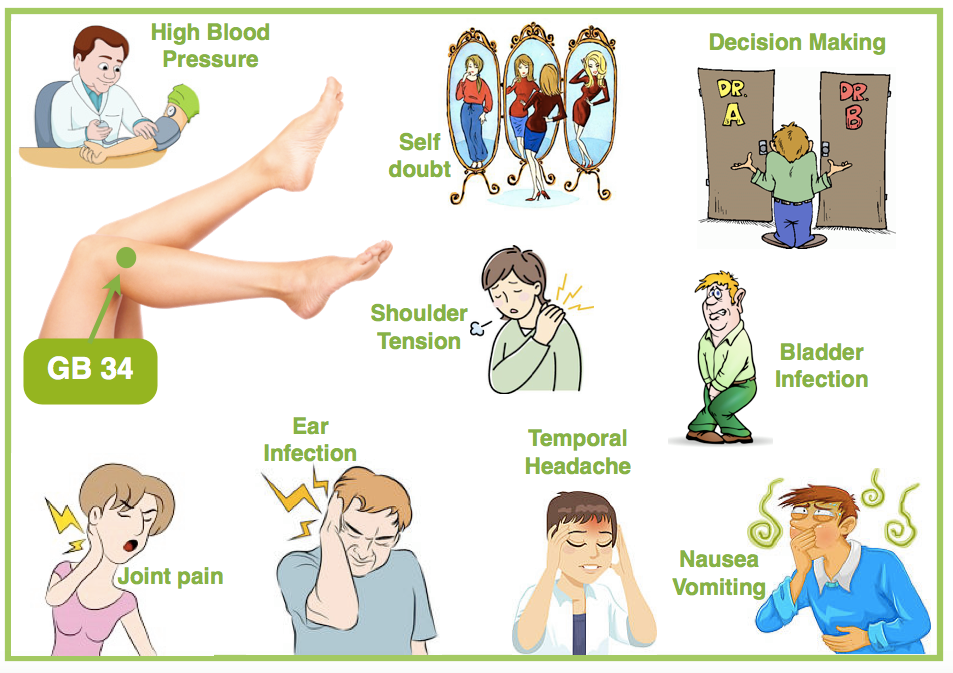
Research on Acupuncture for Rheumatoid Arthritis
- A systematic review published in the Journal of the American Medical Association found that acupuncture was more effective than sham acupuncture (a control group) for reducing pain in people with RA.
- Another study published in the Journal of Traditional Chinese Medicine found that acupuncture was effective at reducing pain and improving function in people with RA.
Treatment options for Rheumatoid Arthritis
- Ear Acupuncture: ear (area of the body affected, Sympathetic, LV, SP, KD).
- Heat therapy: applying heat to the joint(s) affected help reduce the pain and stiffness. Moxa on the acupuncture points and affected joints will work wonders to improve blood circulation.
- Exercise: regular exercise can help reduce the severity of R.A.. Gentle activities such as walking, Yin yoga, and Gi Gong can be effective in increasing motility and reduce stiffness.
- Relaxation techniques: stress can exacerbate R.A.. It is important to educate our patients in finding ways to relax and manage stress. Techniques such as deep breathing, and meditation can be helpful in reducing pain.
- Chinese herbal remedies: single Chinese herbal teas such as Ginger, turmeric and rosemary should be taken as tea on a regular basis, as they are warm in nature, improve circulation and reduce inflammation.
- Diet and lifestyle changes: making changes to the diet and lifestyle can also help reduce the severity of R.A.. The patient needs to be eating a healthy, balanced diet high in anti-inflammatory foods such as leafy greens, nuts, and fatty fish. They also need to avoid foods that can trigger attacks such as caffeine, alcohol, sugar, gluten and processed foods. Staying hydrated and getting enough rest can also help manage rheumatoid arthritis.
View this post on Instagram
Rheumatoid Arthritis Video Transcription
How to manage Rheumatoid Arthritis using Chinese medicine, acupuncture and so much more
Today I’m going to talk about the Western definition and treatment the TCM views, patterns, acupuncture points, treatment using herbal medicine, ear acupuncture and full recommendation. Stay till the end because I’m going to share the three items I recommend to all my patients with RA to do at home in order to manage the arthritis better.
Welcome back to my channel. If it’s your first time here, I’m Clara from AcuPro Academy and I create Chinese medicine and acupuncture content for students and practitioners, making it easy to grasp and fun to learn. Let’s do! This as I said in the introduction, we are going to talk about how to manage Rheumatoid Arthritis or RA.
Western Definition & Treatment Options
So, we’re going to start with the Western definition and option treatment options that patients have when it comes to RA. Rheumatoid Arthritis is a chronic, autoimmune condition that creates inflammation of the joints. It is most common in women and start to develop between the age of 40 and 60. Western medicine treatment for RA requires ongoing management, often they will recommend medication, physical therapy, and sometimes in bad cases even surgery.
Risk Factors for Rheumatoid Arthritis
Now let’s look at the risk factors when it comes to Rheumatoid Arthritis. Age is a big one. As we age, as we get older, we have more chance to develop it. Gender unfortunately women are more prone to developing RA. Obesity is a big one, because carrying extra weight in the joints create more inflammation and therefore can contribute to RA developing. Occupation or jobs can also contribute to rheumatoid arthritis symptoms developing earlier specifically when there’s repetitive ongoing weight bearing exercise.
I have a patient who came to see me years ago because he was on his knees all the time in his job. He was developing more and more pain and started developing Rheumatoid Arthritis symptoms. So we were managing it, because obviously eight hours a day he was still on his knees in his job. We can’t take the root cause away, because unless he stops his job that is still there. So we are going to manage it and allow him to be able to continue to work.
Smoking also has been linked to contributing to rheumatoid arthritis symptoms. Diet, which is a big one for those eating a lot of processed food, drinking alcohol, having a lot of acidic food like coffee, and eating a lot of sugar can contribute to create more inflammation in the body and therefore increase the chance of having symptoms of rheumatoid arthritis.
RA in Chinese Medicine
RA is categorized in Chinese medicine as Bi syndrome, which is basically any disorders that cause pain, tingling, numbness, heaviness of any of the four limbs. And it’s due to external pathogen invasion and Qi stagnation. So RA is categorized as a Bi syndrome, and we’re going to look at it when we look at the TCM pattern of diagnosis.
According to Chinese medicine, when it comes to causes according to Chinese medicine, it is very similar to the risk factors. Smoking, diet, lifestyle, jobs, but also genetics. So weak Essence. There’s a lot of research that shows that Chinese medicine and acupuncture is very beneficial to manage rheumatoid arthritis.
Let’s look at the TCM pattern of diagnosis when it comes to RA.
The First Stage
As you can see it’s all about external pathogen invasion. So the first one is wind, damp, cold, and the swelling is the dampness. That makes sense? The heavy is the dampness, but the cold is the cool, painful joint. Right? Because cool has tendency to stop circulation, create pain and create blood stasis, in the end right? So we’re going to be stiff upon rising in the morning. The joints are really stiff, we need to loosen up, we need to move blood, we need to have circulation and then we feel a bit better. So this restriction of movement because cold again creates blood stagnation or Qi stagnation to start with.
The pain is better with heat, of course because there’s a lot of cold and it is affected by weather. Which means when it’s cold and damp weather, like in Vancouver in the winter it is much worse and this is why a lot of people that have arthritis feel so much better when they move to a dry hot place like Arizona or Nevada. That’s why there are a lot of retiree people move to those places because they feel so much better when it comes to the arthritic pain, right?
The loose stools is the dampness, as well pale tongue with a white coat. The white coat is the cold. It could also have a greasy coat if there is a lot of dampness and a lot of swelling and the pulse is wiry which means Liver Qi Stagnation and slippery. It’s a really typical B syndrome when it comes to the early stage of Rheumatoid Arthritis.
First Stage Treatment
Herbal formula for this is Wen Jing Juan Bi Tang which is really warming as well. And we can do also moxa on the joints and add all the points that I’ve listed in here so we have Bladder 17 to move blood, Bladder 23 because usually this happens in older people so it’s good to really nourish the kidneys. REN 4 and of course local point A-Shi points which can be wherever it is: on the hand, the elbow, the knee, wherever the pain is going to be. As well, you can add up more points like Gallbladder 34, you can add up other points to try to really mitigate the pain. You can add up LI 4 if it’s not too strong, if the person is not too old. Does that makes sense? I’m just giving you the basics.
The Second Stage
Then we look at the second pattern, which is a bit middle stage, but it’s more wind, damp heat. There’s still the dampness (which is swelling of the joints and heavy pain). However, in this instance, the pain is going to feel hot, it’s going to look red when you look at it and the person is going to sweat easily. There may be fever sometimes, so feeling hot all the time thirst for cold drinks and dark urine. The tongue is red (which is the heat) with a thin yellow coat (which is still the heat). It could have a greasy coat if the dampness was very prominent, and you can see on the pulse it’s slippery, rapid. Slippery is Damp and rapid is Heat, right?
So we might not see all those symptoms. It’s always a reminder that this is basic and not everybody’s going to have all the symptoms, right?
Second Stage Treatment
The formula that is best for this is by Bai Hu Jia–sorry I can’t pronounce Chinese–the formula that is best for this is Bai Hu Jia Gui Zhi Tang. Which is not very cold, it’s just a bit cooling and moving and relieving pain for the joints. DU 14 is going to clear the heat with Large Intestine 11. LI 4 is going to expel the pathogen. Spleen 9 which you could also put in the previous pattern as well because it clears the dampness. San Jiao 5 is also good to clear the dampness and to relieve the pain in the joints. Of course we want to do the A-shi or the local point, again, depending where the pain is mostly prominent.
If you’re enjoying my graphics so far and this whole information on Rheumatoid Arthritis it is all part of my book Chinese Medicine Treatments Made Easy you can have the PDF format or you can have the book a hard copy that ships all over the world if that’s more your jam. If you haven’t got your copy yet I cover over 160 syndromes of Chinese medicine treatment for all of those to help guide you to help your patients get better now.
The Third Stage
Now let’s look at the next patterns, which are more the later stages meaning that the person has had this issue for quite a while now. It’s developing further and further. The first one is Qi and Blood Deficiency plus phlegm. When it comes to phlegm, it is more thicker than dampness so those joints are going to be very rigid and even deformed. They are going to have deformity of the joint because phlegm is harder than dampness so it becomes worse.
There’s obviously a lot of pain, distended, swollen joints. There’s going to be maybe palpitation. That’s a Qi Deficiency in Blood Deficiency of the Heart. There’s going to be fatigue. That is quite often. The person is going to have a pale face, pale lips, poor memory. Fatigue of course, but also poor focus, poor concentration, a pale tongue with a greasy coat. The greasy coat is a phlegm and a slippery weak pulse. The weak pulse comes from the Qi and Blood Deficiency, and the phlegm of course is slippery.
Third Stage Treatment
So one of the formulas that’s used for this is Huang Qi Wu Gui Zhi Tang. Huang Qi is Astragalus which is really good to tonify Blood and Qi and then Gui Zhi is Cinnamon. Cinnamon is really good to relieve pain and it’s really good for improving blood circulation and it’s warming. Because when there’s Qi and Blood deficiency, the person may start to feel a bit more on the cool side. When
it comes to points, again you can do moxa on the A-shi points or the local points where the pain is. You want to use Stomach 40 to clear the phlegm and tonify Qi and Blood. The best point is Stomach 36. The second best point is Spleen 6. Those 3 points together are probably one of my favorite points.
You can also add up Gallbladder 34 which is the influential point of all sinews (which means joints, ligaments and tendons).
The Fourth Stage
Gallbladder 34 is really useful in this case–the last pattern–that is very basic and often seen in clinical practice: is Kidney Yin and Yang Deficiency with Phlegm. Most of late stage people that have RA already are going to be more older. As we age, our Kidney Yin and Yang will slowly deplete so there may be muscular atrophy because the person is so stiff and in pain. They don’t move as much and they lose muscle mass with nodules which means deformity of the joints plus stiffness. That’s the phlegm again, just like in the case before. The pain gets worse with cold so there’s a bit more Yang deficiency, and it’s worse with cold again. This is why a lot of people move to places where it’s warmer and they can enjoy a better life without having to deal with a cold weather.
There’s also dizziness that’s more of a Yin Deficiency, but it could also be due to phlegm. Tinnitus which is low pitch and constant, that’s a Kidney Yin Deficiency. Low back pain or knee pain that is crying that’s a Kidney Deficiency. In general, the tongue’s gonna be pale if there’s more Yang Deficiency. It would be swollen, but it could be cracked and dry if there was also Yin Deficiency showing on the tongue. Sometimes it’s hard it doesn’t always show both Yin and Yang Deficiency on the tongue so it’s not always easy. The pulse is going to be deep for sure and if there’s more Yin Deficiency it might be thin. If there’s more Yang deficiency it might be slow and very very weak.
Fourth Stage Treatment
The formula is a basic formula which is Shen Qi Wan which means Kidney Qi formula. That is a very basic formula. It does not address the phlegm at all it’s just tonify Kidney. We could use other the formula, for this is Shen Qi Wan which means Kidney Qi formula. It is going to address the Kidney Deficiency, but not necessarily the phlegm. When it comes to points, Stomach 40 again, great for phlegm and then the A-shi or the local points. Plus doing DU 4, REN 4, Bladder 23. We could do Kidney 3, Kidney 6 trying to really tonify and nourish Kidney Yin and Kidney Yang as much as we can.
However, if the person is really old (like past 80-85) they’re frail, they’re atrophy, they’re very weak. We don’t want to overwhelm them with a lot of points.
I’m from the school of thought that the least amount of points, but the right points is the best treatment than having a lot more needles on the patient. That takes a lot and can make them very tired, right?
We don’t want to increase the fatigue because they’re already depleted.
Treatment Options to help patients manage Rheumatoid Arthritis
1: Ear acupuncture or regular acupuncture. These are going to be so helpful. You can put ear seeds and patients can press them or of course you can needle that. We’re going to do Liver, Spleen and Kidney. Then we’re going to add up Sympathetic, then we can add up the areas that are affected. If it’s the wrist, if it’s the knee, if it’s the shoulder, if it’s the hip, that’s what we’re going to add up on the ear.
2: Moxa because we want to bring blood circulation to the area to relieve the stiffness and the pain. Specifically for those that have the pattern of wind and cold or Yang Deficiency, moxa is going to help the symptoms of pain and stiffness. Moxa brings blood circulation.
3: Exercise. If we don’t, use it we lose it! It’s really important to tell patients that they need to go for walks. They can try Yoga, Tai Chi, Qigong, but they need to move. For some patients going swimming is really good; however, if there’s a lot of dampness, swimming may make it worse. What we want to do is really adapt to what the pattern is and recommend exercise that is gentle, but effective in relieving all that stiffness.
These are really important, but also don’t forget:
4: Stress can really increase the symptoms of RA, unfortunately. It’s really important to tell the patient that they need to find ways to manage stress it could be meditation, deep breathing, exercise, going for walks outside, fresh air, forest bathing. Anything that’s going to help them relieve the stress.
5: Chinese herbal therapy. Apart from the formulas, we can recommend patients to drink teas that are really well known to decrease the pain. For example: turmeric, ginger or rosemary are very good for all rheumatoid arthritis patients. Specifically rosemary and ginger for patients that feel cold or have wind damp cold or Yang deficiency. Those are very warming. Makes sense, right? Turmeric is very good at bringing blood circulation. So it’s really good for those patients as well.
6: Diet because that’s really the key to managing inflammation of the joints. It’s really important to tell patients to avoid processed foods, acidic food like coffee, alcohol. For some people dairy because it creates more dampness and phlegm. Gluten can also affect arthritic patients.
All this inflammatory food needs to go and we need to replace it with really healthy, whole foods. Things like leafy greens, cooked food, nuts, seeds, omega-3 fatty acids like salmon and sardines. We also need to be mindful of night shades vegetables like tomatoes, potatoes, bell peppers, zucchinis because they are often a little bit of an exacerbation for rheumatoid arthritis patients.
Look for what makes it worse and avoid it. Everybody’s different because as you know in TCM, we treat the person as a whole not the disorders. we have to adapt to each patient now.
Bonus Tips to Manage Rheumatoid Arthritis at Home
The bonus tips we talked about at the beginning of this video the three tips to tell your patients to do at home to manage their Rheumatoid Arthritis
Number one as I said earlier is exercise. Qigong is fantastic to relieve the stiffness to keep moving but it’s gentle. It doesn’t put a lot of stress on the body.
Number two two taking supplements like Vitamin D, Chondroitin, Glucosamine, Omega-3. Those are great to as an addition to help to manage arthritis.
The third tip is managing stress. It’s really important that the patient has a life that is low in stress or is managing it the best of their ability by journaling, doing meditation, deep breathing, exercise, going out with friends. Enjoying life this is really important to help patients identify what can make them release the stress and bring it down.
Did you know I create a lot of videos on acupuncture for pain? Here’s one if you haven’t seen it yet it is fantastic. It comes from a live that was very popular. I hope you have a fantastic day and no matter what keep rocking it using TCM!

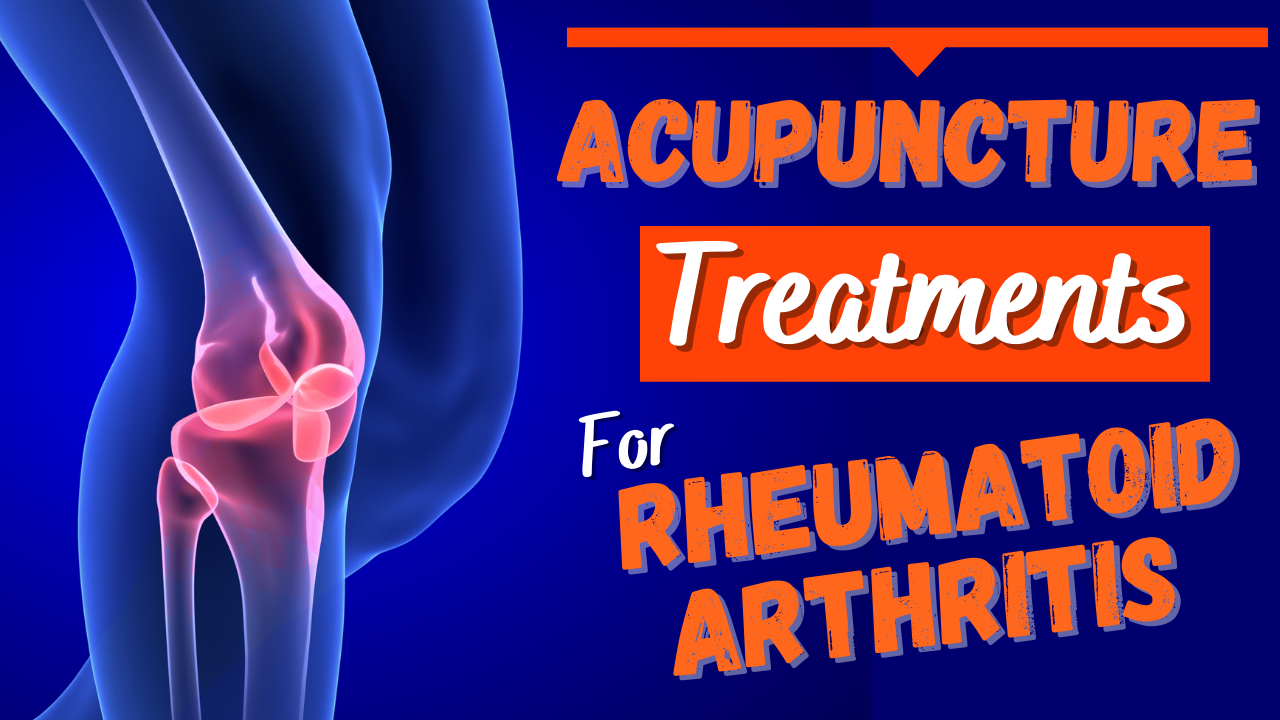
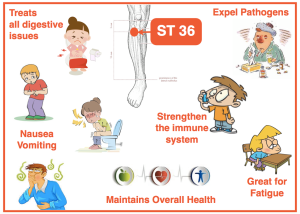

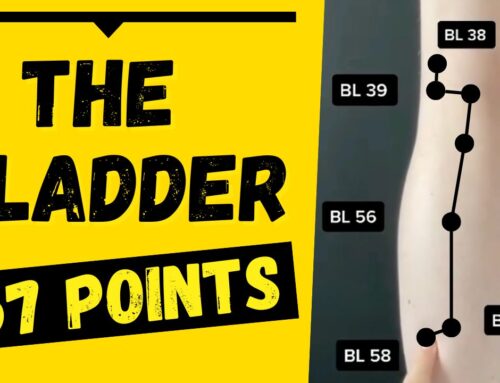


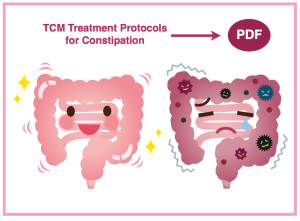
Hi Clara,
Ginger turmeric and rosemary tea. Are there any products available that you can recommend or link?
Thank you!
Hi Erin,
We highly recommend supporting your local natural health food store or tea shop! If you’re looking for something more mainstream for your cupboard, Traditional Medicinals is a great tea brand. In Canada it’s available at most grocery, natural food stores and online. You can even make fresh tea if you want to get creative, there are lots of recipes online if you have the ingredients available to you 🙂
Hope that helps!